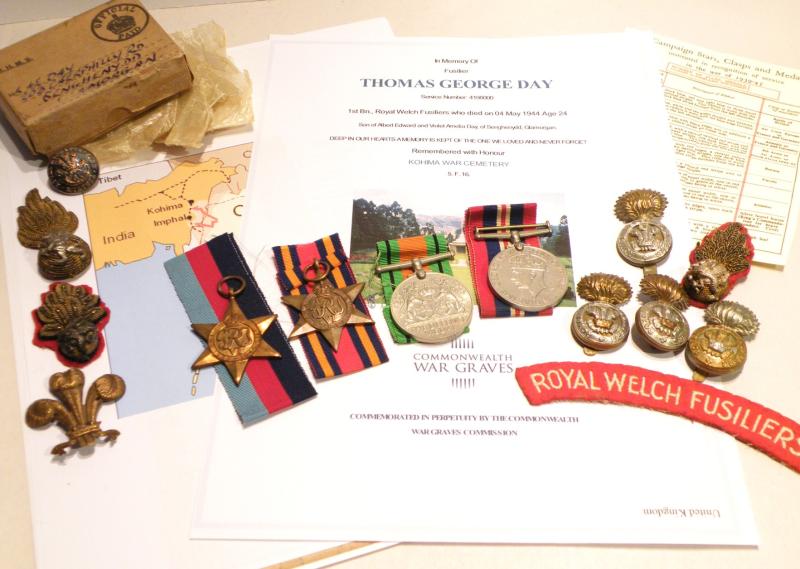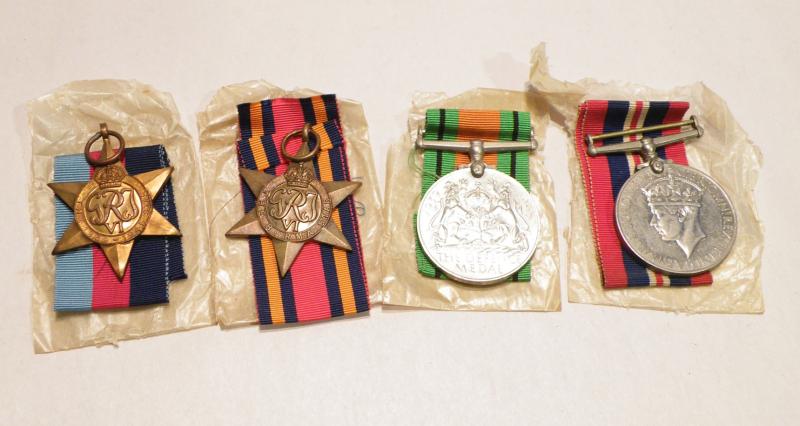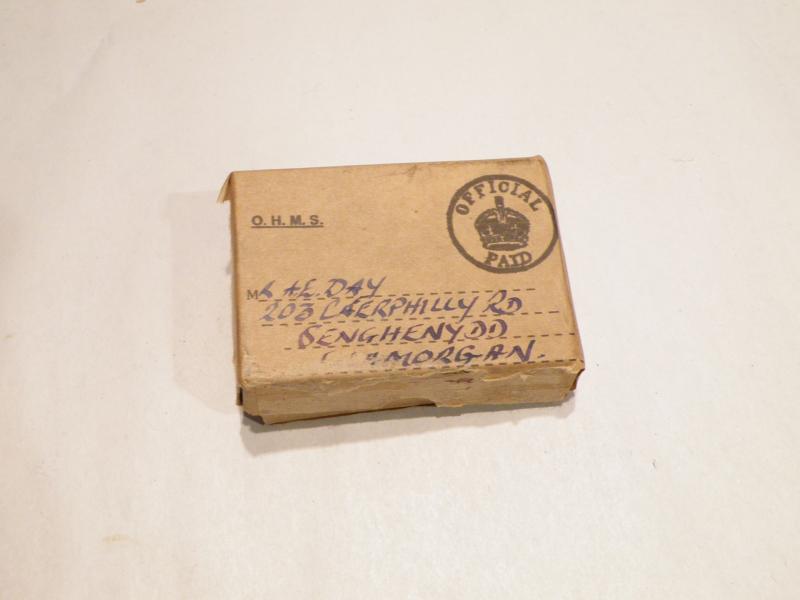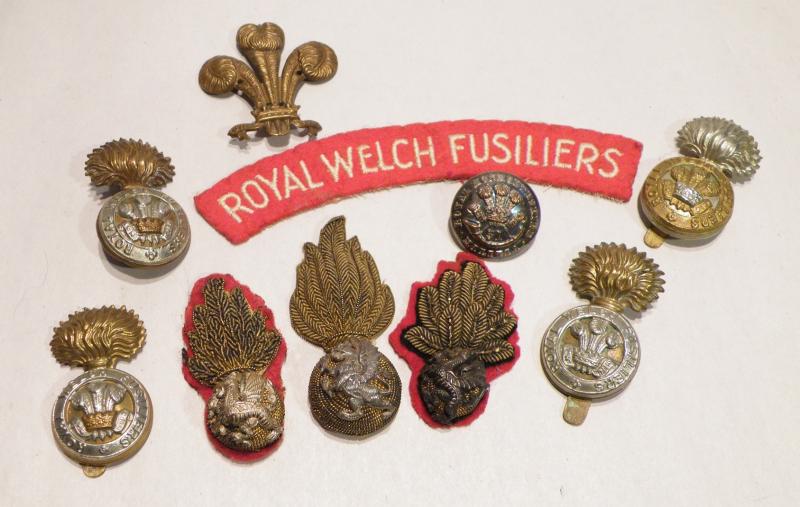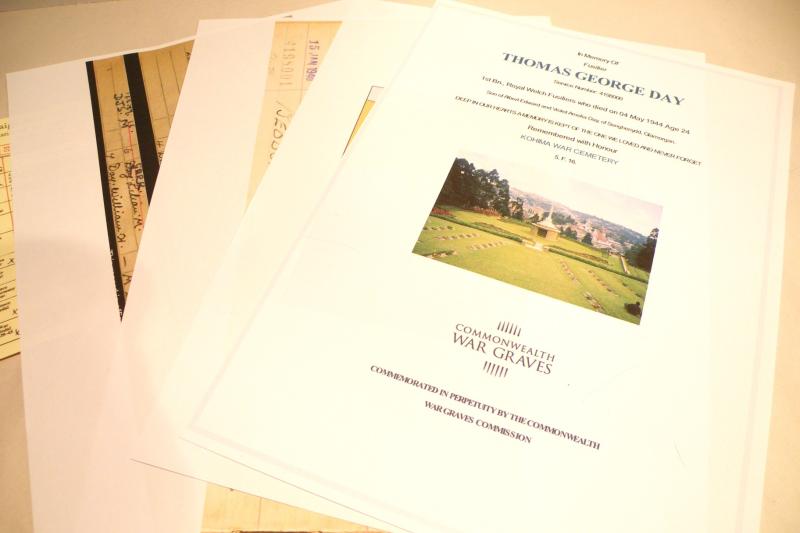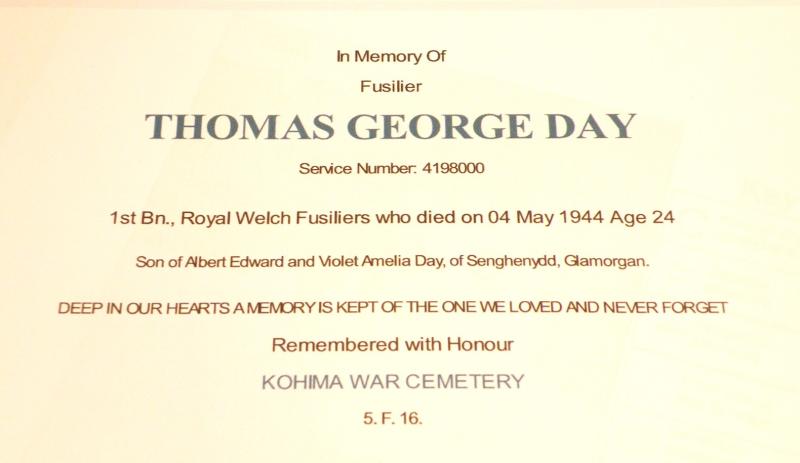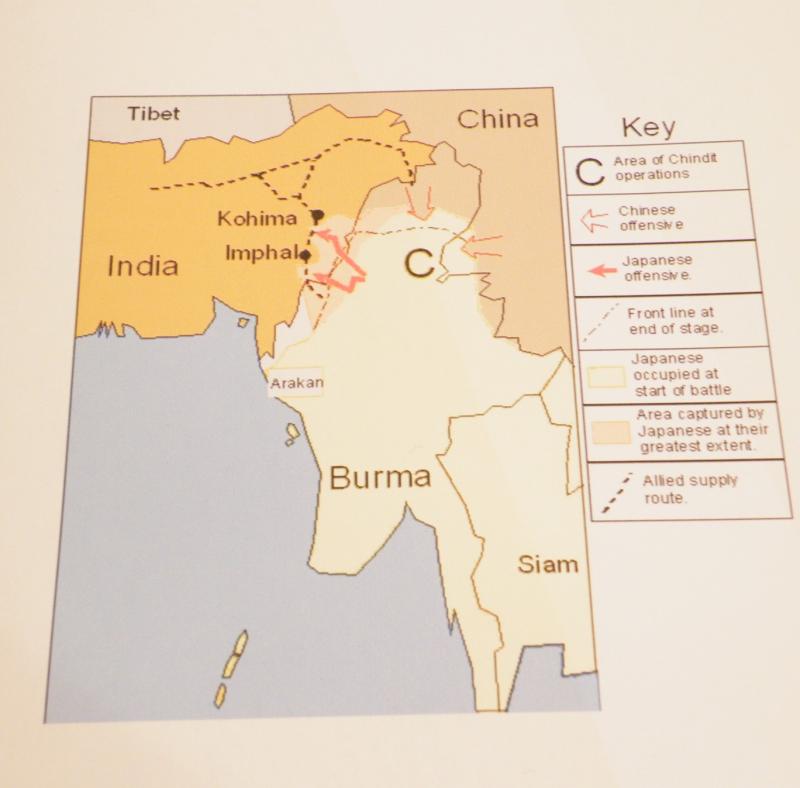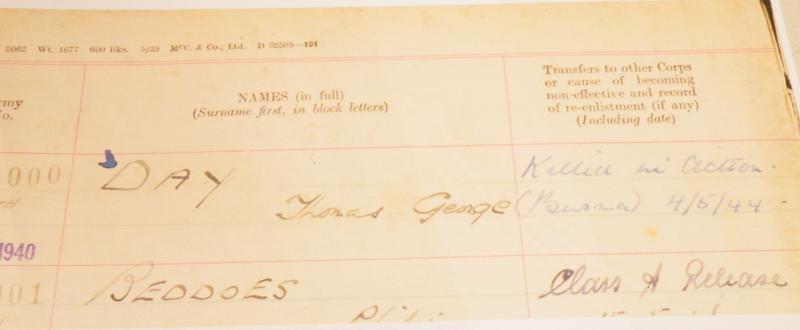WW1 Group 4 to Day R Welsh Fusiliers KIA Burma.
A WW2 medal group of 4 medals including 1939/45 star, Burma star, Defence medal and the 1939/45 war medal in named and addressed box of issue and condolence medal issue slip named to Fusilier T G Day. A quantity of original Royal Welsh Fusiliers badges and insignia.
Thomas George Day was born in Glamorgan Wales in 1919, his father Albert worked as a Boilerman at the local Collery. Before the war he was also employed at the local Collery as a labourer. Thomas was either already serving with RWF when war broke out or he enlisted straight away or he may have been a territorial, either way he appears in the 1st Battalion Day Book 15th January 1940.
During the Second World War, the 1st Battalion, Royal Welch Fusiliers was a Regular Army unit and part of the 6th Infantry Brigade, assigned to the 2nd Infantry Division. It served in France in 1940 with the British Expeditionary Force. The battalion fought in the short but fierce battles of France and Belgium and was forced to retreat and be evacuated during the Dunkirk evacuation. It is more than likely Thomas served in the battle for France in June but I have not been able to confirm this.
After two years spent in the United Kingdom, waiting and preparing for the invasion that never came (Operation Sea Lion), the 1st RWF and the rest of 2nd Division were sent to British India to fight the Imperial Japanese Army after a string of defeats inflicted upon the British and Indian troops. The battalion was involved in the Burma Campaign, particularly the Battle of Kohima, nicknamed Stalingrad of the East due to the ferocity of fighting on both sides, that helped to turn the tide of the campaign in the South East Asian theatre.
The battle of Kohima took place in three stages from 4 April to 22 June 1944 around the town of Kohima, now the capital city of Nagaland in Northeast India. From 3rd to 16th April, the Japanese attempted to capture Kohima ridge, a feature which dominated the road by which the besieged British and Indian troops of IV Corps at Imphal were supplied. But by mid-April, the small British and British Indian force at Kohima was relieved.
From 18th April to 13th May British and British Indian reinforcements counter-attacked to drive the Japanese from the positions they had captured. The Japanese abandoned the ridge at this point but continued to block the Kohima–Imphal road. From 16th May to 22nd June the British and British Indian troops pursued the retreating Japanese and reopened the road. The battle ended on 22nd June when British and British Indian troops from Kohima and Imphal met at Milestone 109, ending the Siege of Imphal.
While the British 6th Brigade defended Garrison Hill, the other two brigades of 2nd Division tried to outflank both ends of the Japanese position, in Naga Village to the north and on GPT Ridge to the south. The monsoon had broken by this time and the steep slopes were covered in mud, making movement and supply very difficult. In places the British 4th Brigade had to cut steps up hillsides and build handrails in order to make progress.64 On 4 May, the British 5th Brigade secured a foothold in the outskirts of Naga Village but lost it to a counter-attack.65 On the same day, the British 4th Brigade, having made a long flank march around Mount Pulebadze to approach Kohima Ridge from the south-west, attacked GPT Ridge in driving rain and captured part of the ridge by surprise but were unable to secure the entire ridge.66 Two successive commanders of British 4th Brigade were killed in the subsequent close-range fighting on the ridge
Both outflanking moves having failed because of the terrain and the weather, the British 2nd Division concentrated on attacking the Japanese positions along Kohima Ridge from 4 May onwards. Fire from Japanese posts on the reverse slope of GPT Ridge repeatedly caught British troops attacking Jail Hill in the flank, inflicting heavy casualties and preventing them from capturing the hill for a week.
It was on this attack that Thomas was killed on the 4th May 1944.
He is now remembered with honour at the Kohima War Cemetery memorial where 1,420 Allied war dead is maintained by the Commonwealth War Graves Commission. The epitaph carved on the memorial of the 2nd British Division in the cemetery has become world-famous as the Kohima Epitaph. It reads:
When you go home, tell them of us and say,
For your tomorrow, we gave our today.
As a dealer in medals and militaria, and I always feel the descriptions I write do not emphasize enough just what these men endured, and the sacrifice they made for our freedom and the freedom of generations to come. Look what they gave.
The medals are still in the box of issue and look untouched and the badges and insignia are in very good used condition and include different variants of the same badge.
Included is copied paperwork and research confirming the above.
Code: 30741

